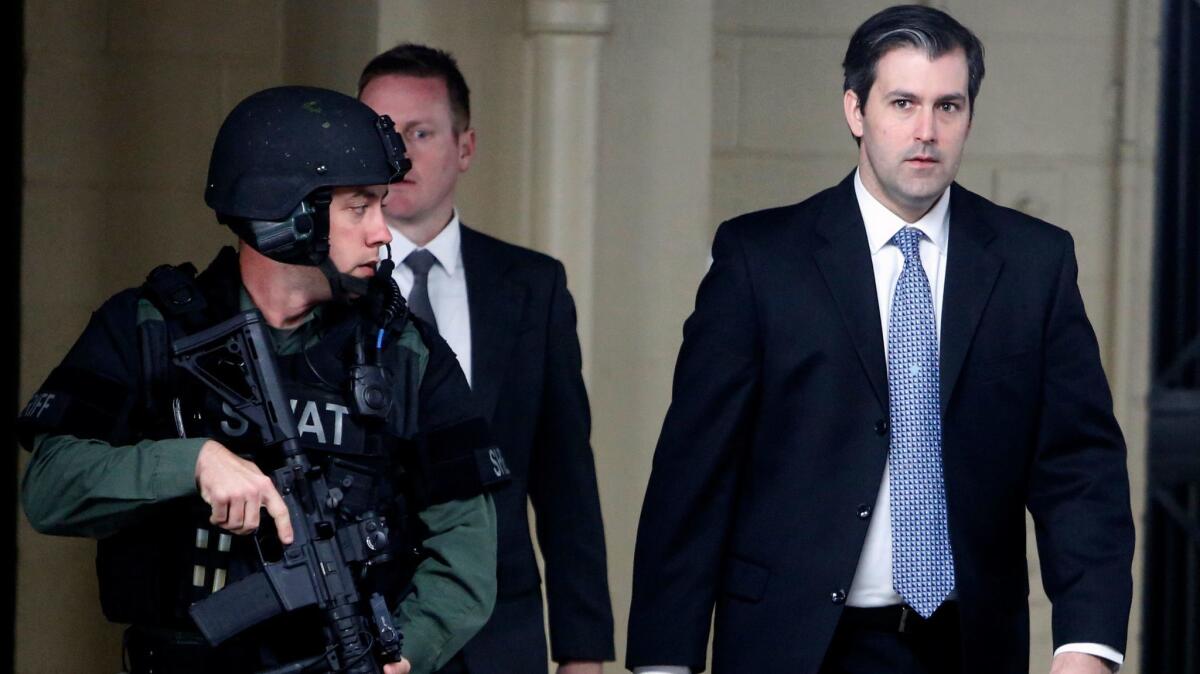Op-Ed: Cops shoot and kill someone about 1,000 times a year. Few are prosecuted. What can be done?

Millions of people have seen the video from North Charleston, S.C. Walter Scott was running away from police Officer Michael Slager when the officer shot him in the back, killing him instantly. Yet after watching the video many times, a jury was unable to reach a verdict in the officer’s recent murder trial. This is a story that has become all too familiar.
I’ve been keeping track of these incidents, and my best estimate is that on-duty police officers across the country shoot and kill someone about 1,000 times each year. Almost all the cases end with a determination by a prosecutor that the police shooting was legally justified. Since 2005, only 78 police officers across the country have been charged with murder or manslaughter resulting from an on-duty shooting. To date, just 26 of those officers have been convicted of manslaughter or a lesser offense, and only one was convicted of murder. (It was an extraordinary situation: James Ashby, a police officer in Rocky Ford, Colo., saw a man skateboarding on a highway, followed the man into his home, shot him in the back in front of his mother, and then pepper-sprayed him as he lay dying. Ashby was convicted of second-degree murder.)
Before smartphones ... there weren’t opposing narratives because a dead man can’t talk. Videos have opened a window into police behavior.
Jurors’ unwillingness to convict police officers may seem baffling — if not infuriating. But it’s not difficult to understand their reluctance. They don’t want to second-guess the split-second life-or-death decisions of a police officer who used deadly force. They understand that policing is violent and that sometimes police officers have to use their guns. Some jurors don’t believe a police officer could be a murderer. It is also possible that jurors are afraid to find a police officer guilty, because they think his or her colleagues might retaliate against them.
Prosecutors have, at least, had some luck charging police officers with “felony murder”: when a victim is killed during the commission of another felony, such as aggravated assault. In many states, there’s no need to prove malice and intent, which may be why prosecutors in Atlanta and Savannah, Ga., obtained convictions for three of four police officers charged with felony murder (the fourth case was dismissed by the prosecutor).
Although many despair of the status quo, there has actually been a slight, if statistically insignificant, uptick in charges of late: In the past two years, 30 on-duty police officers who shot and killed someone have been charged with murder or manslaughter. That’s more than a third of the total in a 12-year period. This shift may be a result of the growing ubiquity of video recordings; indeed, there was video of at least part of the incident in 17 of those cases.
Even so, prosecutors have struggled to get convictions. Three cases with video evidence resulted in a guilty verdict, two by jury trial and one by a guilty plea entered just prior to trial. Three other cases ended with a nonconviction — two through acquittals at a jury trial and one in which the prosecutor dismissed the charges against the officer after a mistrial. Eleven cases with video evidence are still pending, including three in which the prosecutor has elected to retry the case after a mistrial. Michael Slager fits in this category.
If videos don’t change the game entirely, they’re certainly better than nothing. Before smartphones made it easier for citizens to record possible malfeasance, the police owned the narrative. There weren’t opposing narratives because a dead man can’t talk. Videos have opened a window into police behavior rarely viewed by the public. Sometimes bad cops defy their training. Sometimes they plant evidence to cover up their crimes. Sometimes they give false statements or write false reports. All of these things happened with Michael Slager: He didn’t do what he was trained to do, he planted evidence — a Taser — and then he lied about it when questioned by investigators.
To reduce unjustified police shootings, or increase the likelihood of prosecutions and convictions, state and local officials should appoint special prosecutors from private practice to investigate shootings and take police officers to court whenever appropriate.
For the time being, however, Americans should video all of their street encounters with police whenever possible — with the understanding that recordings are hardly a panacea, just the best tool we have available.
Philip Matthew Stinson is an associate professor of criminal justice at Bowling Green State University in Ohio, where he researches police crime.
Follow the Opinion section on Twitter @latimesopinion and Facebook
More to Read
A cure for the common opinion
Get thought-provoking perspectives with our weekly newsletter.
You may occasionally receive promotional content from the Los Angeles Times.










